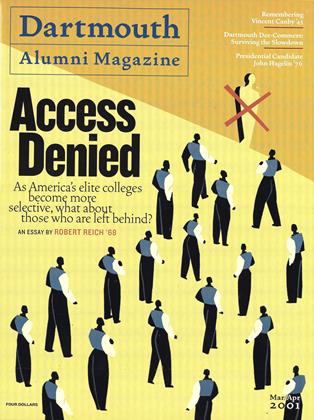El Nino strikes again. The latest victim of the Weather Channel's favorite bad boy is the black-throated blue warbler. During El Nino years, when the waters of the Pacific basin warm up due to a shifting of trade winds, the little birds have trouble finding enough to eat in their New Hampshire breeding grounds.
Biology grad student Scott Sillett came to this conclusion after studying 25 years of warbler observations collected by biology professor Richard Holmes at the warblers' summer breeding grounds in New Hampshire's Hubbard Brook Experimental Forest and at the birds' winter home in Jamaica.
In an article published in Science magazine, Sillett, Holmes and Tulane University professor Tom Sherry' 73 theorize that during El Nino years, the Jamaican winter and the New England spring are drier than normal. As a result, insects don't multiply as well, which limits the warblers' food supply.
When La Nina, the opposite of El Nino, dominates the weather cycle, insect populations soar, the warblers fill their stomachs—and more fledglings survive.
The findings indicate that more frequent occurrences of El Nino—brought about by global warming—could harm many types of birds. "No one really thought about global climate trends as a limiting factor for bird populations before," says Sillett. "Our work raises a red flag that migratory birds may be susceptible to global warming."
 View Full Issue
View Full Issue
More From This Issue
-
 Cover Story
Cover StoryThe Opportunity Divide
March | April 2001 By ROBERT REICH ’68 -
 Feature
FeatureRisky Business
March | April 2001 By JAMIE HELLER ’89 -
 Feature
FeatureThe Chemistry of Crime
March | April 2001 By CHRISTOPHER KELLY ’96 -
 Personal History
Personal HistoryA Critical Relationship
March | April 2001 By Christopher Kelly ’96 -
 Article
ArticleSeen & Heard
March | April 2001 -
 Interview
Interview"I Was Made For This"
March | April 2001 By Henry Homeyer '68







